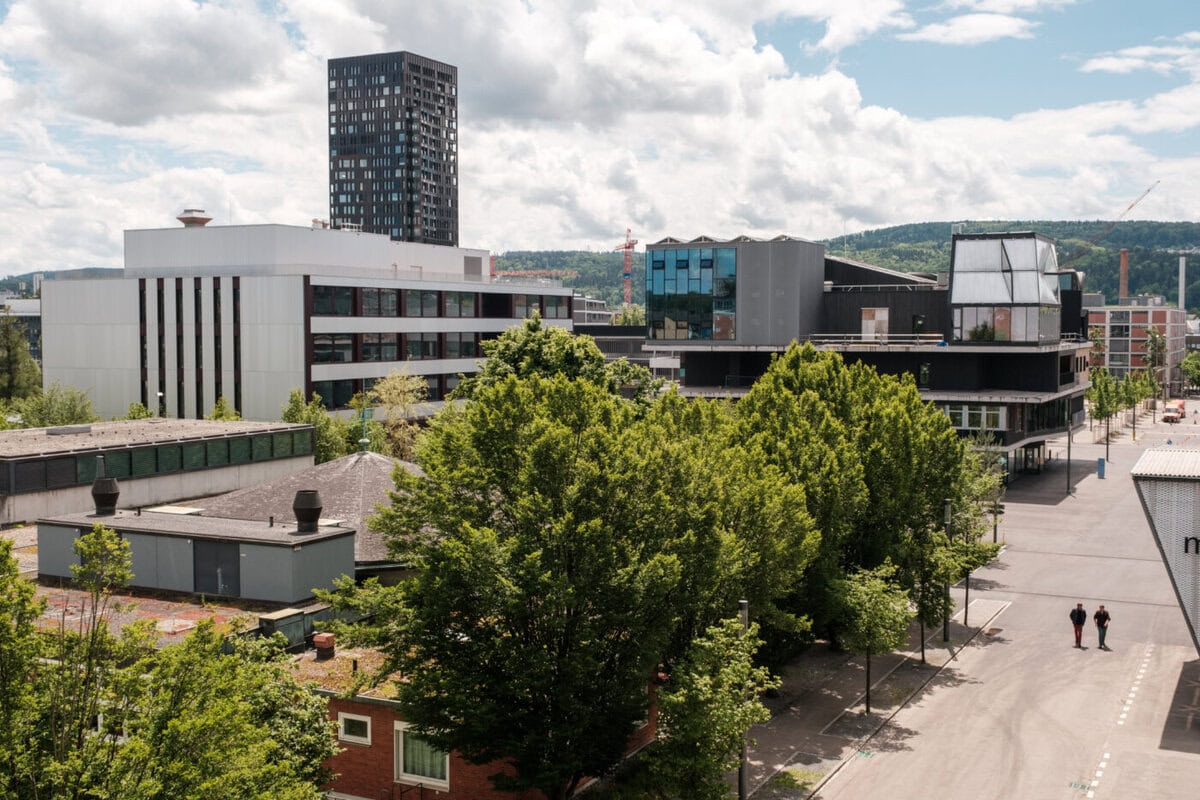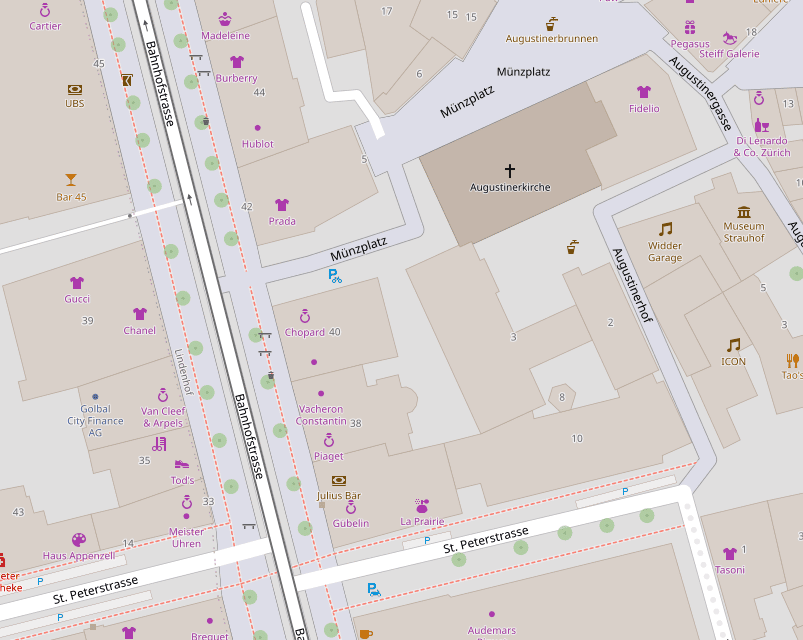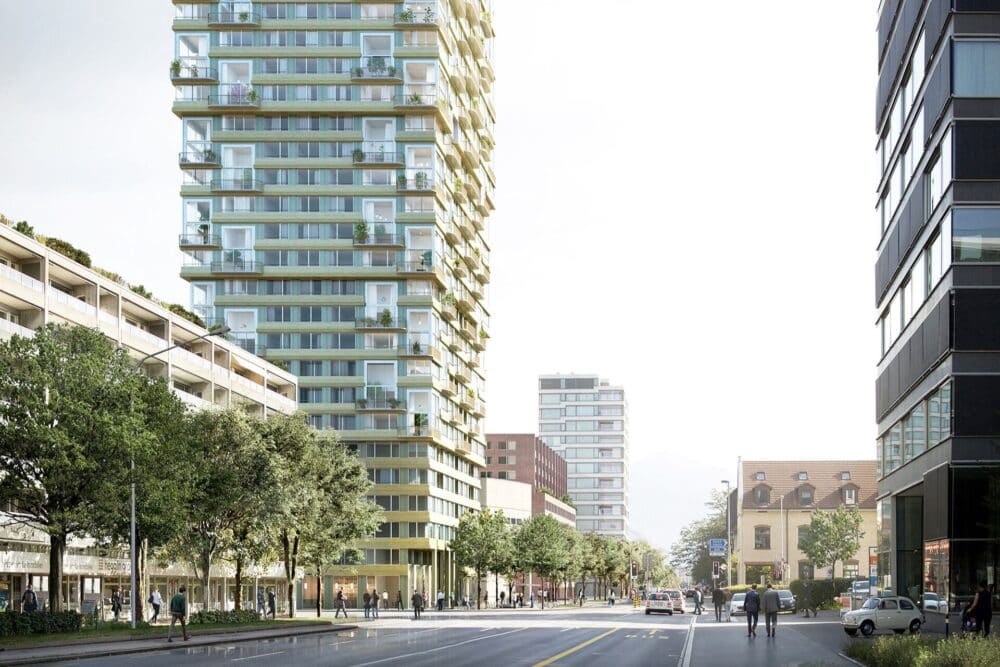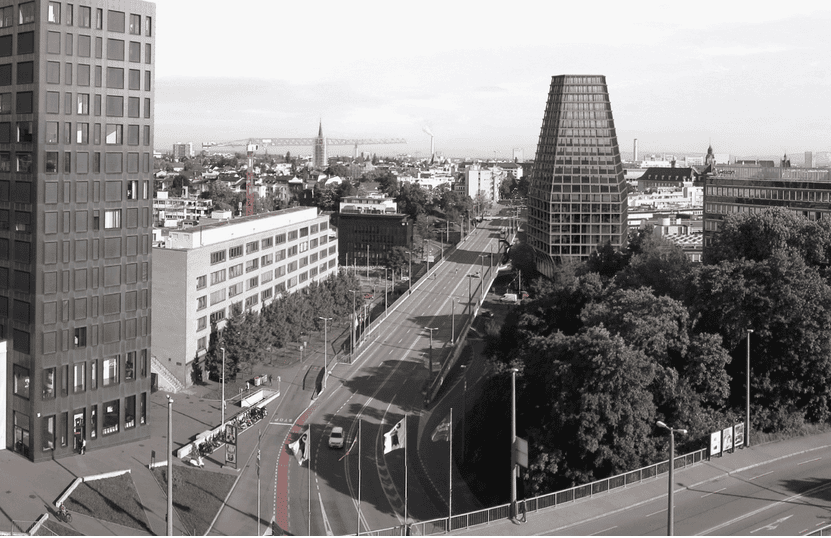Dübendorf: Three new buildings on the Empa campus
The Swiss Federal Laboratories for Materials Science and Technology Empa has put a new laboratory, a multifunctional building and a parking garage into operation. The buildings are also intended to score points with in-house innovations.

Three further buildings on the joint campus of the materials research institute Empa and the aquatic research institute Eawag in Dübendorf (ZH) have been completed after three years of construction. The result is a new laboratory building with 30 laboratories and offices each, a multifunctional building with 1,000 square meters of office space and a bistro on the first floor, as well as a multi-storey parking lot. The laboratory building, including the multifunctional areas on the first floor, comprises almost 40,000 m³, while the multi-storey parking lot with 260 parking spaces and the multifunctional building have a combined volume of 60,000 m³. An existing laboratory building from the 1960s is now being demolished.
All new buildings are Minergie-P-Eco certified. Developments from the Empa laboratories were also used, particularly in the energy and building sector. One new development, for example, is a field of 144 geothermal probes that reach 100 m into the ground. Instead of a conventional low-temperature geothermal probe field, this is an experimental high-temperature geothermal probe reservoir. The waste heat from the chillers is fed into the ground via the geothermal probes in summer. The seasonal geothermal energy store is to be charged in this way. In winter, the energy is extracted from the ground again for heating; the seasonal geothermal energy storage tank is discharged. As part of a research project, this innovation will now be investigated over the next few years to find out how it affects the campus's energy supply, operation and security of supply.
Eawag is also investigating how the use of high-temperature borehole heat exchangers affects the surrounding soil, the groundwater and the microorganisms living in it. According to Empa, Switzerland already has the highest density of geothermal probes in Europe, which is why the project is attracting a great deal of interest from the federal government and cantons. In addition, thanks to special separating toilets, urine is collected in the new laboratory building and transported to Eawag's "Water Hub" at the Nest Institute. In the laboratory there, it is processed into plant fertilizer. Wooden ceilings were also used in the construction of the parking garage (IB reported). (aw)









